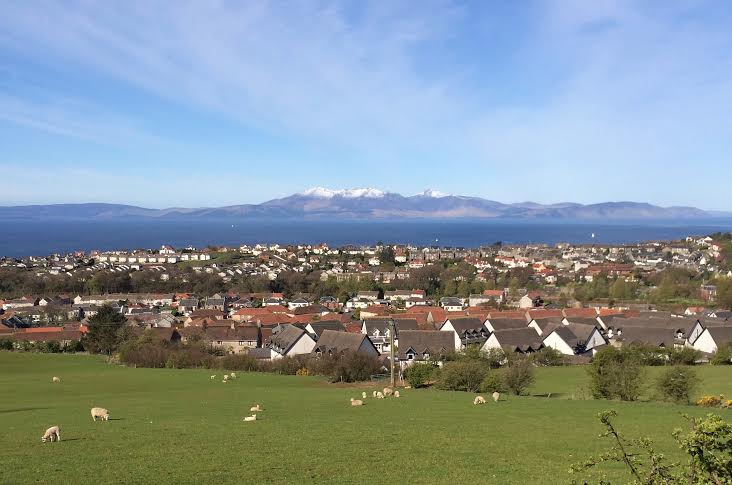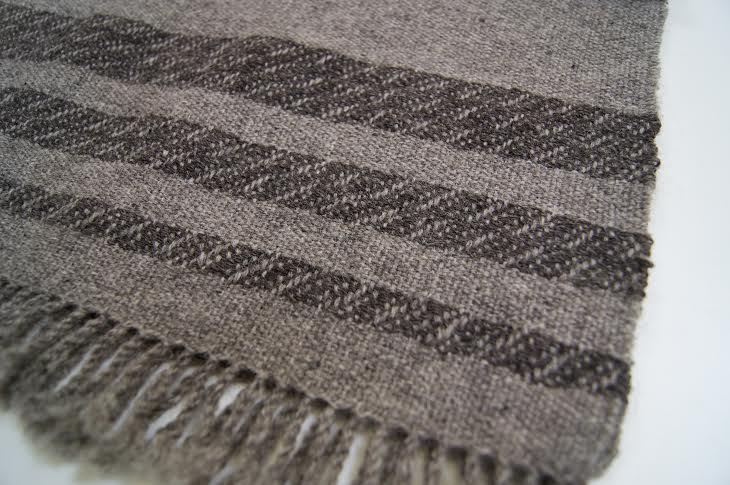ANGE SEWELL is a weaver from West Kilbride – Scotland’s craft town. She describes herself as a weaver of Scottish weather, Ange creates handwoven cloth, clothing and furnishings at her studio, Weft Blown, and teaches classes in weaving and spinning too. Ange will also be writing about her favourite British yarns to weave with but here she writes about why using the wool resources from the UK means so much to her and her work.
Whilst I was a student at Edinburgh University in the nineties I shared a flat with a couple of vets for the summer. On the toilet door to cover up the glass was a big poster showing all the different sheep breeds of the British Isles. This poster fascinated me as I’d never before really appreciated how many different types of sheep we had roaming the landscape. It also made me laugh as it was amazing how well hung these males of the breeds were hung.
Having grown up as a country girl and always loved seeing the sheep roaming the hills I hadn’t fully realised how diverse sheep breeds were. It wasn’t until a good 10 years or so after seeing this poster that I started to get interested again in different sheep breeds. The reason for this was I had discovered knitting, and then weaving and spinning and I started to appreciate the differences in colour and texture you can get from the fibre and yarn of these various breeds.
Over the past couple of years I have switched to using British yarn and fibre as much as I can in my work. My weaving is inspired by the weather and the effects it has on the surrounding environment. When I think of the weather blowing over the hills I always think of the sheep out there with their protective woolly coats protecting them from the worst that mother nature can throw at them. This makes wool the perfect yarn type for me to use for my weaving as I can’t think of anything that is more exposed to the elements than the sheep of the British Isles.
I have been shifting towards using British wool, and occasionally European wool, but only from companies that can prove the provenance of where the fibre has come from. Having lived in rural areas for most of my life it is important to me that I support farmers who produce British wool from all breeds of sheep to ensure that it is viable for them to continue farming, and in turn helping to support rural communities. Rural areas have delicate economies and having lived in areas that have been decimated by closures of mines and mills many years beforehand, keeping the farming community going is important as they can give stable jobs in such.
The other main factor I use British wool is that Britain has lots of sheep! As a lot of these sheep are of different varieties in beautiful natural colours and a range of textures. In the past the breeds that produced the softest wools were exported and the main sheep breeds left were bred for meat instead of their fleece. Thankfully there has been a shift over recent years and smallholders and farmers are starting to realise that there is a growing demand for British wool to be used by the growing numbers of knitters, spinners and weavers and are making a concerted effort to keep the diversity of breeds going. It is one of the nicest things about teaching spinning and weaving in that I am meeting more smallholders who have started small flocks of rare breed sheep and want to know how to turn their fleece into yarn and cloth.
Over the next year I am looking to extend my source of wool for my woven products and I am starting to look at small producers of yarns to help showcase what great quality British woollen yarn we have in this country. For me it is important to keep the demand up for British wool as we have a fantastic resource for yarn on our doorstep which we need to support to keep it thriving.
Photos © Ange Sewell 2015

